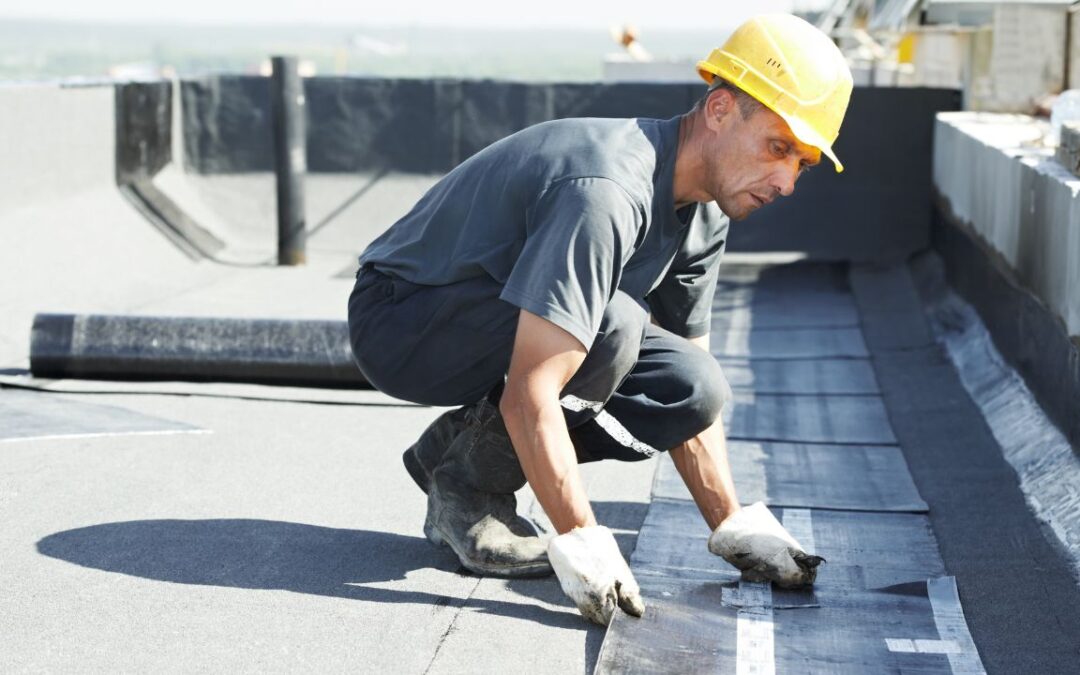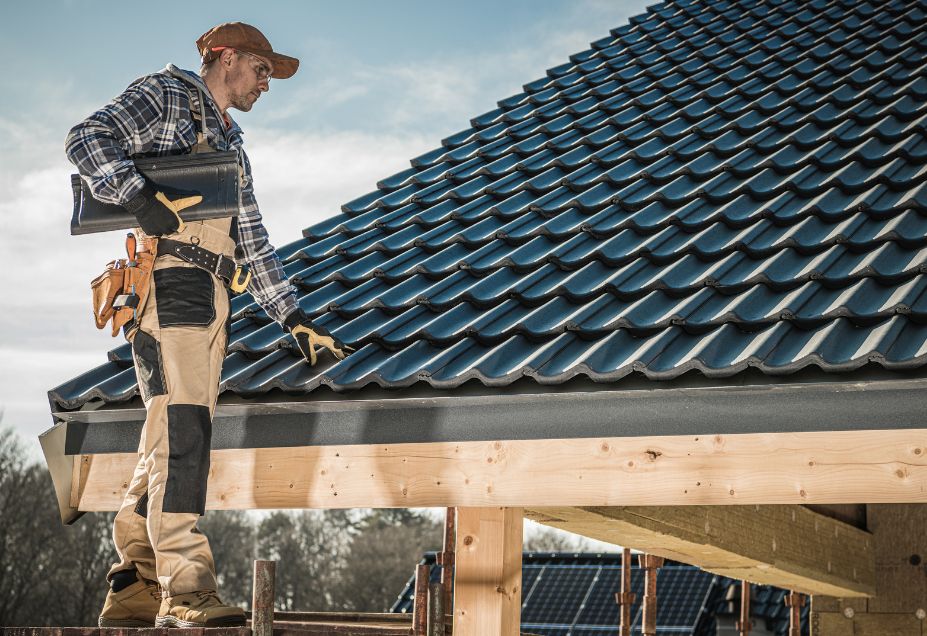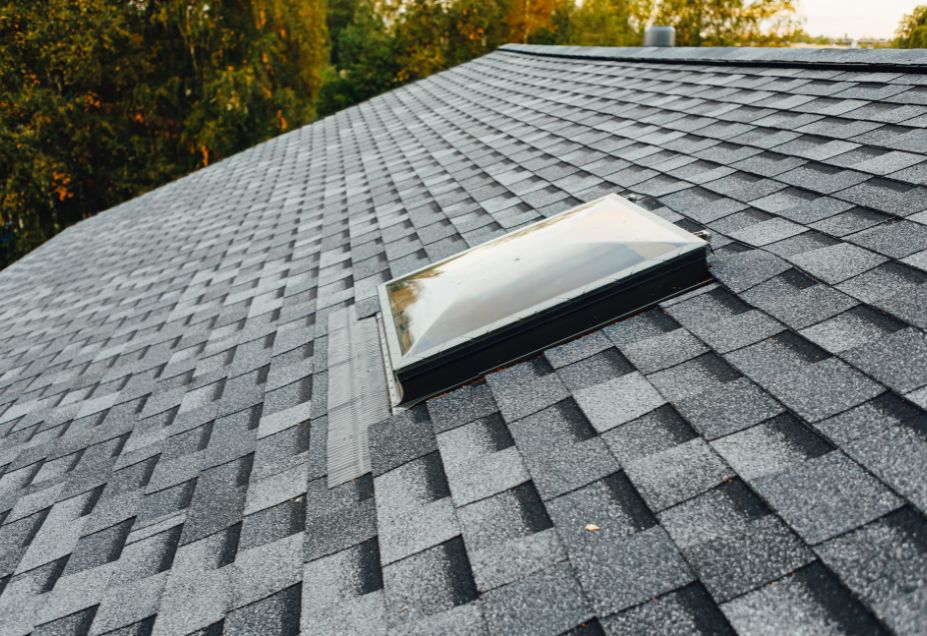
An Expert Guide to Advanced Roofing Techniques in 2024
An Expert Guide to Advanced Roofing Techniques Colorado in 2024
In the world of building and designing homes, the roof is more than just a covering for the top of a structure. It acts as the first line of defense, shielding the inside from harsh weather and other external threats. Beyond its protective role, the roof plays a crucial part in how a building looks and how sturdy it is.
Recently, there’s been a lot of exciting progress in the roofing field. Innovations have given rise to new and improved ways of building roofs. These methods use modern materials and technologies to make roofs stronger, more energy-efficient, and with a variety of styles to choose from.
For instance, there are solar tiles that not only protect your home but also harness renewable energy. Then there’s durable metal roofing designed to endure tough weather conditions. These advancements are changing our perceptions of what roofs can do.
The advantages of these new roofing methods are plenty. They don’t just provide better protection; they also help save energy and contribute to a greener environment. But, it’s important to note that making the most of these techniques requires the expertise of professionals and regular upkeep.
In this article, we’ll take a closer look at these advanced roofing methods. We’ll explore the benefits they bring, how they’re installed, and what factors to consider when picking the right method for your project. Whether you’re a homeowner thinking about renovations or a construction professional, this thorough guide will give you the knowledge you need to make smart choices about roofing.
The Evolution of Roofing Materials
Exploring the Evolution of Roofing Materials Over Time
Roofing materials have come a long way in human history, transforming from simple, natural choices to advanced, high-tech systems. In ancient times, people used materials like thatch, mud, and stone for their roofs because they were easy to find and use. Thatch roofs, made from plant stalks, were popular in Britain and equatorial countries, while mud and stone roofs provided extra safety and resistance to fire.
As civilizations progressed, so did roofing materials, and wood, slate, and clay tiles became widely used. These materials not only served their purpose but also added to the architectural beauty of the time.
The Shift to Modern and Advanced Options
The Industrial Revolution brought a big change to roofing materials. In the 19th century, corrugated iron became a favorite for its toughness and fire resistance. Later on, in the late 19th and early 20th centuries, asphalt shingles took the spotlight for being affordable, waterproof, and easy to install, quickly becoming a standard in North America.
In today’s world, the roofing industry has embraced innovation, bringing technology and sustainability into roofing systems. Composite materials, solar tiles, and green roofs are leading this transformation. These advanced materials not only shield homes from the weather but also produce energy, provide insulation, and help manage stormwater, giving roofs a broader role beyond just protection.
Looking Forward to Future Innovations
The future of roofing promises even more excitement with the development of cool roofing materials that reflect sunlight and absorb less heat, materials with self-healing properties, and roofs that can change color to improve energy efficiency. As the industry continues to evolve, the focus remains on creating materials that offer long-term benefits, save costs, and stand strong in the face of changing environmental conditions.
This historical journey from simple thatch roofs to advanced solar tiles reflects humanity’s ability to adapt and find smart solutions for better roofing. Looking ahead, the roofing industry is set to keep evolving, driven by performance, sustainability, and technological progress.
Types of Advanced Roofing Materials
Solar Tiles
Solar tiles are an advanced roofing option that seamlessly incorporates solar technology into your roof. Unlike regular solar panels, these tiles are crafted to match your home’s look while also producing electricity. Each tile can generate 13-63 watts of energy, offering a practical and eco-friendly choice for homeowners keen on renewable energy.
Metal Roofing
Metal roofing stands out for its strength and energy efficiency. It can withstand winds of up to 140 miles per hour, resist heat, and remain non-flammable during wildfires or lightning strikes. By reflecting the sun’s UV and infrared rays, metal roofs contribute to significant energy savings—homeowners can cut their energy bills by 10%-25%. These roofs are also environmentally friendly, often made from recycled materials, and fully recyclable at the end of their lifespan.
Green Roofing
Green roofs, also called living roofs, bring environmental perks and insulation qualities. By acting as a natural barrier, they enhance energy efficiency, potentially reducing energy consumption by up to 30%.
Beyond that, green roofs combat the urban heat island effect, improve air quality, and manage stormwater by minimizing runoff. Additionally, they can prolong the life of the roofing system and provide noise reduction benefits.
Synthetic and Composite Materials
Synthetic and composite roofing materials showcase innovation in durability and aesthetics. Mimicking traditional materials like slate or wood shakes, they offer enhanced strength and often a longer lifespan. Lightweight, impact-resistant, and low-maintenance, these materials can be more environmentally friendly by incorporating recycled materials. Choosing synthetic and composite options brings a blend of style and sustainability to your roofing needs.
Benefits of Advanced Roofing Techniques
Boosting Energy Efficiency
Cutting-edge roofing materials play a crucial role in enhancing a building’s energy efficiency. Take solar tiles, for example; they convert sunlight into electricity, lessening the dependence on traditional energy sources. Another example is cool roofs, specially designed to reflect more sunlight and absorb less solar energy.
This not only lowers the building’s temperature but also cuts down on cooling costs. Additionally, metal roofs reflect sunlight and excess heat, contributing to keeping buildings cool during hot months. Dynamic roofing systems go a step further by adapting to changing environmental conditions and optimizing energy efficiency throughout the day and across the seasons.
Enhanced Longevity and Durability
Advanced roofing materials often outshine traditional ones in terms of durability and lifespan. Consider composite shingles, which can endure for up to 50 years or more, surpassing the typical 15 to 20 years of three-tab asphalt shingles.
Metal roofs, known for their toughness, can withstand harsh weather conditions and boast impressive lifespans ranging from 75 to 200 years, depending on quality and maintenance. Synthetic roofing materials, designed to mimic traditional ones, not only offer enhanced durability but often have a longer lifespan, providing lasting protection.
Positive Environmental Impact
Many advanced roofing materials contribute positively to the environment and promote sustainability. Solar-integrated roofing systems generate a significant portion of a building’s energy needs, reducing reliance on non-renewable energy sources. Green roofs, also known as living roofs, stand out as one of the most eco-friendly choices by reducing heat transfer, managing stormwater, and improving air quality.
Metal roofs add to their environmental credentials by often being made from recycled materials and fully recyclable at the end of their lifespan. Similarly, synthetic and composite materials frequently incorporate recycled materials, lessening the demand for new resources and supporting environmental conservation.
Installation and Maintenance of Advanced Roofing Systems
Expert Installation for Top-Notch Roofing
Getting a pro to install your advanced roofing system is key for its top-notch performance and long-lasting quality. A correctly installed roof ensures water drains properly, the ventilation is just right, and insulation is at its best. Pros in this field have gone through thorough training, mastering the ins and outs of various roofing materials.
They’re savvy about different climates and can suggest the right materials and installation methods for your situation. What’s more, these professionals have access to top-notch materials and tools, making their work faster and more efficient than if you were to do it yourself. Plus, they know all about safe roof repairs and installations, so you can relax without worrying about potential risks.
Maintenance Tips for Longevity and Performance
Maintaining your advanced roofing system is crucial for its durability and top-notch performance. Here are some important tips for keeping it in tip-top shape:
Regular Checkups: It’s vital to inspect your roof regularly, especially after extreme weather events, to catch any damage or wear and tear in time.
Cleanliness Matters: Keep your roof spick and span, free from debris, to prevent water buildup, mold, and mildew.
Swift Leak Fixes: If you spot any leaks or damage, fix them promptly to prevent the issue from getting worse and causing more extensive damage.
Pro Help: Get a professional to handle regular roof maintenance and repairs. They can perform inspections, cleaning, and minor repairs to keep your roof in its best condition.
Yearly Roof Checkup Plans: Some roofing companies offer yearly inspection programs to ensure your roof’s longevity.
By sticking to these maintenance tips, you can ensure your advanced roofing system stays in excellent condition, safeguarding your property from the elements and extending the lifespan of your roof.
Safety Considerations in Advanced Roofing
Ensuring the safety of roofing contractors is a top priority, and the Occupational Safety and Health Administration (OSHA) plays a vital role in setting up clear guidelines to achieve this goal. OSHA’s standards are designed to safeguard roofers from workplace accidents and tragic outcomes.
These guidelines encompass various safety aspects, such as preventing falls, using personal protective equipment (PPE), ensuring electrical safety, and managing hazardous materials responsibly.
Avoiding falls is particularly crucial in roofing work, as a fall from a roof can lead to severe injuries or even fatalities. OSHA insists on the implementation of safety measures like safety harnesses, guardrail systems, and other protective gear to mitigate the risk of such accidents.
Personal protective equipment (PPE) is another key element in promoting roofing safety. OSHA mandates roofers to wear essential gear like hard hats, safety glasses, gloves, non-slip footwear, and other protective items to shield against potential hazards.
Electrical safety is a paramount concern, especially when roofers are in close proximity to power lines. OSHA emphasizes maintaining a safe distance from power lines and using non-conductive tools to prevent accidents.
Proper handling of hazardous materials is also integral to roofing safety. Employers are required to provide comprehensive training to workers on how to handle, store, and dispose of these materials safely.
In essence, adhering to OSHA guidelines ensures a secure working environment for roofing contractors, reducing the likelihood of accidents and promoting overall safety and well-being on the job.
The Role of Proper Equipment and Training in Preventing Accidents
Ensuring safety in roofing work is crucial, and it revolves around having the right gear and knowing how to use it. Roofers need proper training on setting up, maintaining, taking apart, and checking fall protection systems. Understanding controlled access zones, guardrails, safety nets, warning lines, and safety monitoring systems is also part of the training.
Knowing the limitations of machinery used in roofing and following the correct steps for setting up overhead protection are important aspects covered in training. Regular safety sessions are valuable, helping roofers grasp workplace dangers and ways to manage and lessen them.
Employers play a key role too. They should make sure that roofers are trained to lift things correctly and use the right equipment for moving roofing materials safely. This precautionary measure reduces the risk of physical injuries while handling heavy items. Overall, a combination of the right tools and proper training creates a safer environment for roofing professionals.
Cost Analysis of Advanced Roofing Options
Initial Investment vs. Long-Term Savings
Investing in a top-notch roof upfront can be a bit hefty, depending on the material you pick. Take, for example, covering a 2,000-square-foot home, where costs range from $16,000 for aluminum to $80,000 for copper. But, here’s the silver lining – the savings in the long run can balance out these initial expenses.
Premium roofing materials, like metal, stick around for 40-60+ years, much longer than the 10-30 years you get with regular asphalt shingles. So, even though the starting cost of a metal roof might seem steep, you end up saving big time because you won’t need to swap it out as often.
And there’s more good news – these modern roofs are energy-savvy, which could mean lower energy bills down the road, adding to the overall savings and making the upfront replacement cost seem less daunting.
Comparing the Costs of Different Advanced Roofing Materials
The price tags on advanced roofing materials can differ quite a bit. To break it down for a 2,000-square-foot home, aluminum roofing may set you back between $16,000 and $34,000, slate tiles between $19,000 and $52,000, clay between $22,000 and $50,000, and copper between $42,000 and $80,000.
Now, diving into specifics, metal roofing goes for $5-$14 per square foot and lasts a solid 40-60+ years. On the flip side, asphalt roofing is more budget-friendly at $3-$7 per square foot but comes with a shorter lifespan of 10-30 years.
If you’re eyeing tile, that might cost you between $300 and $2,500 per square, sticking around for 30-200 years. Wood shakes, falling in the $300 to $700 per square range, last for 25-30 years. And if you’re into the classy slate or stone look, be prepared to spend between $600 and $1,600 per square, enjoying a robust lifespan of 50-200 years.
Case Studies: Success Stories of Advanced Roofing Techniques
Practical Instances of Modern Roofing Methods in Action
The effectiveness and advantages of advanced roofing techniques become clear when we observe their successful application in various projects. Take, for example, the work done by Joe Hall Roofing & Contracting. Through detailed case studies, they showcase the issues faced by property owners, the solutions they offer, and the positive outcomes achieved. In a specific instance, they resolved a claim for a property owner, securing a final award of $474,355. This financial support allowed for the installation of new asphalt shingle roof systems on eight damaged structures.
Feedback and Long-Term Performance
To gauge the impact of advanced roofing techniques, customer testimonials provide valuable insights into their performance and overall satisfaction. Advanced Roofing Inc. has earned positive reviews, with one client describing their experience as a “5 Star experience” and expressing contentment with every aspect of the service. Similarly, Performance Roofing, Inc. has received commendation for its courteous and knowledgeable staff, well-maintained work sites, and exceptional service.
Influence of Cutting-Edge Roofing Technologies
The adoption of advanced roofing technologies not only transforms the construction industry but also delivers tangible benefits to customers. Consider Duro-Last’s innovative roofing system, which has demonstrated economic advantages, such as enhancing milk production in cows by maintaining a cooler building temperature and reducing operational costs for farmers. Furthermore, these state-of-the-art roofing materials have gained recognition for their multifunctional, energy-efficient, and environmentally friendly characteristics. Real-world examples attest to their effectiveness in providing protection to buildings.
Choosing the Right Advanced Roofing Technique for Your Project
Key Considerations for Choosing the Right Roofing Technique
When deciding on an advanced roofing technique for your project, it’s important to consider several factors:
- Climate: Your location’s climate is a significant factor in choosing the right roofing material. For areas prone to wildfires, metal roofs are an excellent choice due to their fire-resistant properties. In urban settings, green roofs can help counteract the heat island effect. Solar tiles, on the other hand, are most effective in areas with ample sunlight.
- Building Design: The design of your building also affects the roofing material selection. The roof pitch, or slope, plays a crucial role in determining suitability. Flat roofs may benefit from materials like rubber or PVC roofing, while steeper roofs can accommodate shingles or tiles.
- Budget: Your budget is a critical consideration. Although some advanced roofing materials may have a higher initial cost, they often provide long-term savings through increased durability, lower maintenance requirements, and enhanced energy efficiency. Carefully weighing these factors ensures that your choice aligns with your specific needs and financial considerations.
Consulting with Professionals to Make an Informed Decision
Seeking advice from a skilled roofer is a wise step in choosing the right roofing technique for your project. These experts possess the know-how and hands-on experience to evaluate your unique requirements and suggest the most fitting materials and methods.
Additionally, they can offer a thorough cost breakdown, considering both the upfront expenses and possible future savings. This guidance ensures that your decision is well-informed and aligns with your specific project needs.
Conclusion
Exploring the world of advanced roofing techniques brings forth numerous benefits, making them a compelling choice for any construction project. These methods utilize cutting-edge materials and technologies to improve roof durability, energy efficiency, and overall visual appeal. Whether it’s solar tiles generating renewable energy or metal roofs standing strong against tough weather, these innovations are reshaping the roofing landscape.
The advantages go beyond immediate functionality, reaching into long-term energy savings, environmental friendliness, and the extended life of the roof. With professional installation and routine maintenance, these advanced roofing systems can provide top-notch protection and performance, surpassing traditional materials.
However, selecting the right roofing technique demands thoughtful consideration of factors like local climate, building design, and available budget. Seeking advice from a seasoned roofer becomes invaluable in this decision-making journey.
Looking ahead, the momentum towards advanced roofing techniques shows no signs of slowing down. Fueled by ongoing innovation and a growing commitment to sustainability, these methods offer exciting possibilities.
Whether you’re a homeowner planning a renovation or a construction professional, exploring these advanced roofing techniques opens doors to a range of benefits. We encourage you to ponder these options for your future roofing projects, unlocking the advantages they can bring to your building.



Recent Comments